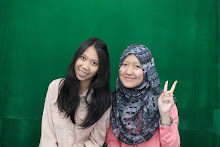Who would have expected to see turtles at Redang Island – the island for sun and fun! On the flip side though, not many people know there’s a turtle sanctuary that is successfully managed by the Sea Turtle Research Unit (SEATRU), Universiti Malaysia Terengganu at Chagar Hutang. Green turtles and Hawksbill turtles have been busy heading there and its good news for turtle conservation! It had not been easy getting them to nest and hatch there but its staff and volunteers are seeing the fruits of their labour!
Before we got to see turtles later in the evening, we had a one day stopover at the one and only primary school, SK Pulau Redang. All 210 students were involved in the science activities we arranged, while their teachers did adult stuff…science learning workshop. In other words, the whole school was engaged with Petrosains! Wow! We’ve never met a bunch of enthusiastic and eager students! They were treated to an interactive science show (they actively participated), a DIY microscope hands-on activity & quiz called En. Hangman. It was indeed an energetic and deafening but satisfying session!
 |
| Hands-on science activities by Petrosains |
 |
| The Teachers' Workshop by Educators Centre, Petrosains |
The turtle sanctuary was the opposite of what we experienced at SK Pulau Redang. Chagar Hutang is located on an isolated beach on the most northern part of the island - away from the hustle and bustle of tourist activities. It is quiet and serene except for the occasional burst of laughter and a flurry of activities from the human residents, which is not many!
The beach is off limits to tourists and casual visitors except for SEATRU researchers, workers and volunteers. However the numbers are kept to a minimum to keep in check disturbances on the nesting beach.
The real work starts when most people are comfortable in bed, about midnight onwards. There’s a lot of waiting and it involves 9 stages until the wee hours of the morning.
1. Landing (turtle just coming out from the water)
2. Crawling up the beach
3. Digging body pit
4. Digging egg chamber
5. Laying eggs
6. Covering the egg chamber
7. Sand-bathing (camouflage nest)
8. Crawling back to sea
9. Re-entering sea
During stages 1-5, turtles are very sensitive and may abort nesting if they are disturbed. Hence monitoring is done during these stages. After the eggs are layed, staff will measure and tag the turtle; and label the nest. Work doesn’t end here though. The beach are also patrolled hourly from sunrise to sunset to inspect nests. It seems like work is never ending!
(Source: SEATRU Volunteer Programme, Juanita Joseph & Liew Hock Chark)
 | ||
| Marking a turtle's nest. Nesting took place on May 29, 2013 |
 |
| A SEATRU volunteer excavating a turtle’s nest |
We were there to observe, and participated to a certain extend. It was exciting when we saw turtles landing one by one (quite a long wait for each turtle) and later laying eggs. Most of us never dreamt we’ll get to experience this precious moment. It was just a handful of us plus the turtle! Wow! Powerful!
So folks, if you are looking for something meaningful and one in a lifetime experience, do checkout SEATRU. You won’t be disappointed!
 |
| An interview session with Dr. Juanita Joseph (Project Leader of SEATRU) and Assoc. Prof. Liew Hock Chark (Founder of Sea Turtle Research Unit - SEATRU) |
This article is written in conjunction with Science Engagement Session at SK Pulau Redang, Terengganu on 18 June 2013 and our educational visit to the Sea Turtle Research Unit, Universiti Malaysia Terengganu (SEATRU, UMT) on 18-19 June 2013. Special thanks to Assoc. Prof. Liew Hock Chark (Founder of Sea Turtle Research Unit - SEATRU) and Dr. Juanita Joseph (Project Leader of SEATRU). Our appreciation to SK Pulau Redang.





















0 komentar:
Posting Komentar